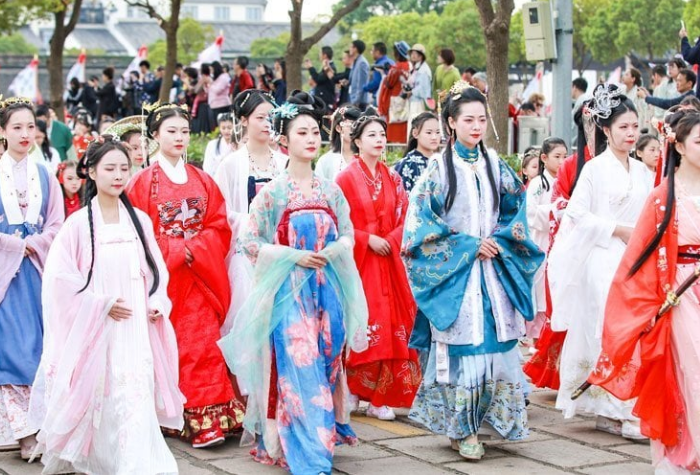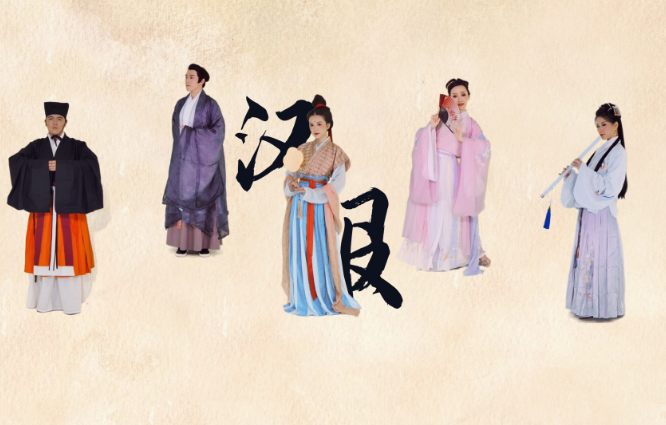Yes,hanfu is more than clothing; it represents a significant aspect of Chinese culture, embodying traditions, art, and history.
Is Hanfu a Culture
Hanfu, the traditional attire of the Han Chinese people, embodies a rich tapestry of history and artistry. This question delves into the essence of Hanfu, exploring its roots and influence. It’s a journey through time, unraveling how fabric and patterns narrate stories of an era gone by.
Definition and Origin of Hanfu
The term ‘Hanfu’ refers to the historical dress of the Han Chinese. Tracing its roots back to the Han Dynasty, it symbolizes more than mere clothing; it represents a deep-rooted aesthetic and cultural ethos. The ensemble typically consists of flowing robes, intricate designs, and a harmonious blend of colors. It’s a testament to the craftsmanship and artistic sensibilities of ancient China. Hanfu isn’t just clothing; it’s a canvas where history meets art.

Historical Significance of Hanfu
Throughout China’s long history, Hanfu has been more than a fashion statement. It served as a cultural identifier, distinguishing the Han from other ethnic groups. During various dynasties, its style evolved, reflecting societal changes and the prevailing ethos. The robes of the Tang dynasty showcased opulence, while the Ming period favored simplicity and elegance. Hanfu has witnessed empires rise and fall, encapsulating the enduring spirit of the Chinese civilization. This attire doesn’t just drape the body; it weaves the past into the present, inviting us to reflect on the continuum of culture.
In discussing Hanfu, we touch upon the very fabric of Chinese culture, examining its threads of history, art, and identity. Each fold and hem of Hanfu carries the weight of centuries, making it not just a cultural artifact but a living chronicle of the Chinese people.
Hanfu in Modern Society
In the contemporary era, Hanfu transcends its historical confines, emerging as a symbol of cultural pride and fashion statement. This section delves into its resurgence and influence, highlighting the blend of tradition and modernity.
Hanfu’s Resurgence and Popularity
Hanfu’s revival in modern society marks a fascinating intersection of cultural identity and fashion. Sparked by increased national pride and interest in heritage, this resurgence reflects a desire to connect with China’s past. Young generations, in particular, have embraced Hanfu, donning it at festivals, in daily life, and on social media. This revival isn’t just a fashion trend; it’s a movement, rekindling interest in traditional arts and crafts associated with Hanfu, like embroidery and silk weaving.
Influence on Contemporary Fashion
Hanfu’s impact on modern fashion is undeniable. Designers increasingly draw inspiration from its flowing silhouettes, intricate patterns, and vibrant colors. This fusion creates a unique aesthetic that resonates globally, symbolizing a blend of old and new. Hanfu elements now appear in haute couture and everyday wear, bridging the gap between ancient tradition and contemporary style. This influence underscores the dynamic nature of cultural exchange, where tradition inspires innovation.
Here’s a table comparing key milestones in Hanfu’s resurgence and popularity:
| Year | Event | Significance |
|---|---|---|
| Early 2000s | Online Communities Form | Beginning of the modern Hanfu movement |
| Mid-2000s | Hanfu Appears in Media | Increased public awareness |
| 2010s | Hanfu Festivals | Popularization and community engagement |
| Present | Global Fashion Influence | Integration into world fashion trends |
The table chronicles Hanfu’s journey from a niche interest to a global fashion influence, underscoring its evolving role in modern society. The resurgence of Hanfu is not just a revival of attire; it’s a reawakening of cultural consciousness, blending the echoes of the past with the rhythm of the present.
Hanfu as a Cultural Symbol
Hanfu, more than a mere piece of clothing, stands as a powerful symbol of Chinese heritage and identity. Its presence in various cultural spheres underlines its significance as a living emblem of tradition.
Hanfu in Ceremonies and Festivals
In ceremonies and festivals, Hanfu takes center stage, embodying the richness of Chinese culture. Its usage spans from weddings, where it represents fidelity and respect, to traditional festivals like the Lunar New Year and Mid-Autumn Festival, where it evokes the spirit of the occasion. People donning Hanfu in these events are not just participating; they are keeping a centuries-old tradition alive, each garment narrating a story of cultural pride and continuity.
Representation in Media and Arts
In media and arts, Hanfu enjoys a prominent place, often used to depict historical accuracy and cultural authenticity. From historical dramas to contemporary films, Hanfu provides a visual feast, transporting audiences back in time. In the realm of art, it inspires artists, serving as a muse for paintings, sculptures, and photography. This representation extends beyond borders, with Hanfu featuring in international exhibitions and cultural exchanges, thus becoming an ambassador of Chinese culture on the global stage.
Hanfu’s portrayal in these domains is not just about aesthetics; it’s a dialogue between the past and present, a testament to the enduring allure of Chinese culture. Each fold of Hanfu tells a tale, each pattern a poem, making it a living tapestry of history and tradition.
Comparative Cultural Analysis
This section offers a nuanced understanding of Hanfu within the broader context of world cultures, comparing it with other traditional attires and exploring global perceptions.
Hanfu vs. Other Traditional Attires
Hanfu, with its unique style and symbolism, stands distinct among the world’s traditional clothing. When compared to attires like the Japanese Kimono or the Korean Hanbok, Hanfu’s characteristics such as its cross-collar, wide sleeves, and flowing silhouette become prominent. Each of these attires reflects the values and aesthetics of their respective cultures, yet they share common threads in representing heritage and identity.
| Aspect | Hanfu | Kimono | Hanbok |
|---|---|---|---|
| Collar | Crossed | T-shaped | Wrapped |
| Sleeves | Wide | Long and hanging | Voluminous |
| Symbolism | Harmony, Simplicity | Elegance, Form | Respect, Grace |
Perception of Hanfu
Globally, Hanfu is increasingly recognized and appreciated for its aesthetic and cultural value. It’s seen not just as a garment from the past but as a living heritage that evolves while maintaining its core. In international circles, Hanfu often symbolizes the depth and richness of Chinese culture, intriguing people with its history and elegance. This growing interest helps foster cross-cultural understanding, showcasing the diversity and beauty of traditional attires.
Understanding Hanfu in relation to other traditional costumes offers insight into how clothing can be a powerful conduit of cultural expression and identity. Through this comparative lens, we appreciate the uniqueness of each tradition while acknowledging their shared role in preserving cultural narratives.

Societal Impact of Hanfu
The Hanfu movement extends beyond fashion, influencing education, preservation efforts, and shaping cultural identity. This exploration reveals the multifaceted role of Hanfu in contemporary society.
Hanfu in Education and Preservation
Hanfu plays a pivotal role in educational initiatives and preservation efforts. Schools and cultural institutions increasingly incorporate Hanfu into curriculums and exhibitions, offering hands-on experiences in traditional garment making. For instance, in some Chinese schools, students wear Hanfu during cultural events, learning about the history and significance of each style. Museums host Hanfu-themed exhibitions, highlighting the evolution of styles across different dynasties. These initiatives not only educate but also instill a sense of pride and continuity in cultural heritage.
Hanfu’s Role in Cultural Identity
Hanfu is a powerful symbol of cultural identity for the Han Chinese. Wearing Hanfu, especially in public events or festivals, allows individuals to express their connection to Chinese heritage. This has led to the formation of Hanfu clubs and communities, where enthusiasts gather to celebrate and promote traditional culture. For many, wearing Hanfu is more than a nod to the past; it’s an assertion of identity in a rapidly globalizing world. Such practices reinforce the importance of preserving traditional culture in modern society.
Through education and preservation, Hanfu becomes more than a historical costume; it transforms into a medium for cultural transmission. Its role in shaping cultural identity illustrates the enduring relevance of traditional practices in contemporary life, bridging generations and keeping the essence of culture alive.







